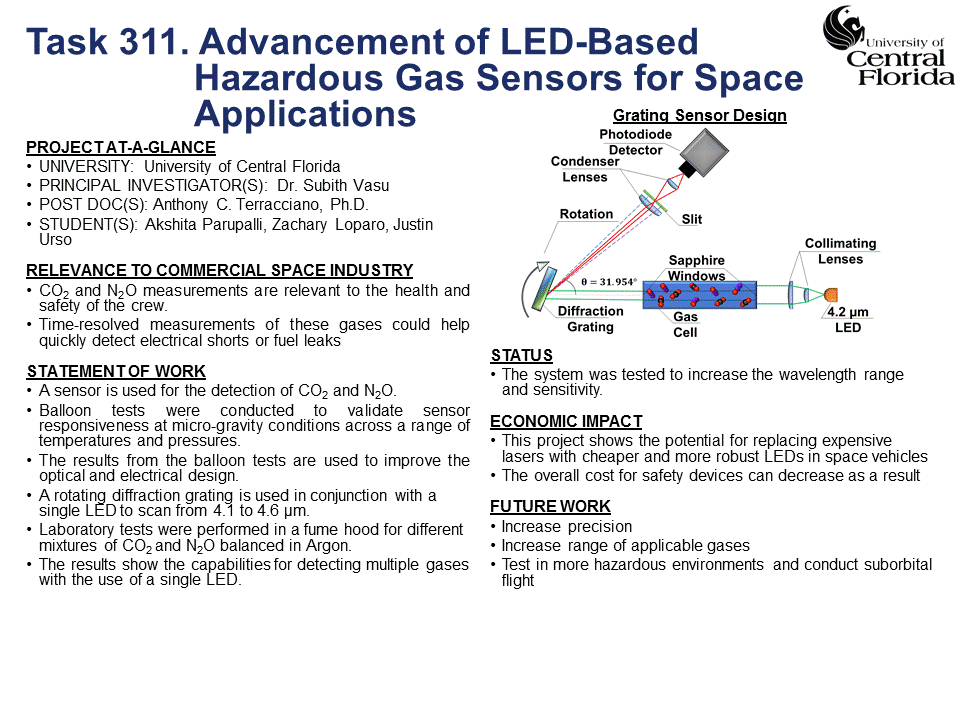311. LED-Based Low Cost Gas Sensor for Crew and Vehicle Safety
Team
| Name | Role | Primary |
| Subith Vasu | Principal Investigator | ● |
| Nick Demidovich | Tech Monitor | ● |
| Heliana Forero | Fiscal Admin | ● |
| Nagy Youssef | Fiscal Admin | ● |
| Yeliza Burleson | Contract Admin | ● |
Project Description
- CO/CO2 measurements are relevant to the health and safety of the crew.
- CO is toxic, even in concentrations as low as 50ppm
- Time-resolved measurements of CO can be used as early indicator of fires
- CO2 concentrations must be monitored in crew cabin for safety With compact, low-cost, low-power sensors that are able to continually monitor important gases that are characteristic of burning materials, a distributed sensor array could be implemented on space vehicles that would allow early detection of fires, gas leaks, or other critical events. With careful selection of targeted gases it may be possible to identify the material that is burning/smoldering which will better inform the crew so that they may respond and prioritize high emergency events. Current sensor design targets CO/CO2 which are traces gases that increase in the presence of smoldering/burning materials. Future iteration will extend to target additional gases such as HCN, hydrocarbons, and polymer vapors.
Project Outcomes
- Design and produce a sensor for evaluation testing in high altitude environment
- Must be autonomous
- Operable in cold, low-pressure environment
- Scalable to final product (compact design)
- Characterize sensor performance in relevant conditions
- High altitude balloon flight evaluation
Summary of Output
Bench scale development and testing. We will conduct tests to establish the sensor sensitivity (minimum detection limit), time-response, and stability.
• We will develop quantitative spectroscopic models that can be used to accurately derive concentration information based on absorption.
• Models for heat transfer will be developed and utilized to minimize radiation effects that could impair the sensor to function properly. Such models will be implemented in commercially available software (e.g., ANSYS)
• Sensor design and housing design must be optimized for spacecraft environment. This would require a caged design that will house every component keeping the weight to the allowable values. We will use Zemax software to arrive at the best design which will maximize sensor sensitivity.
Quad Chart
